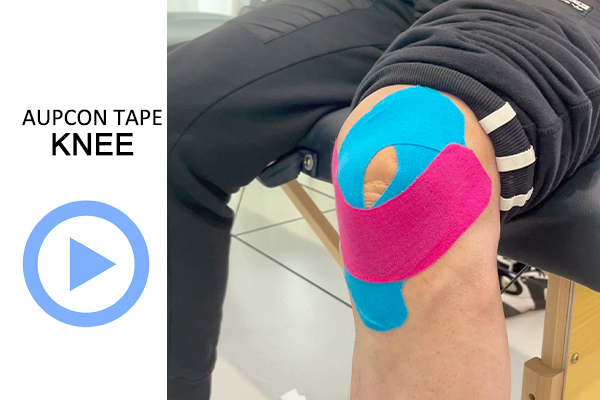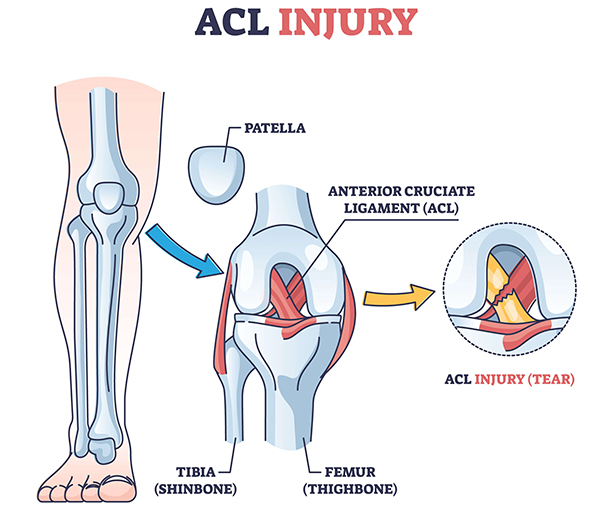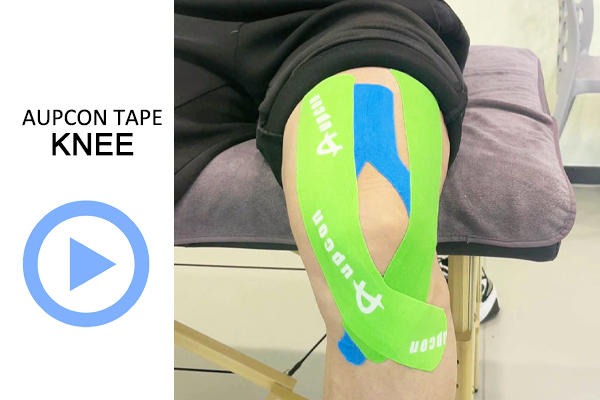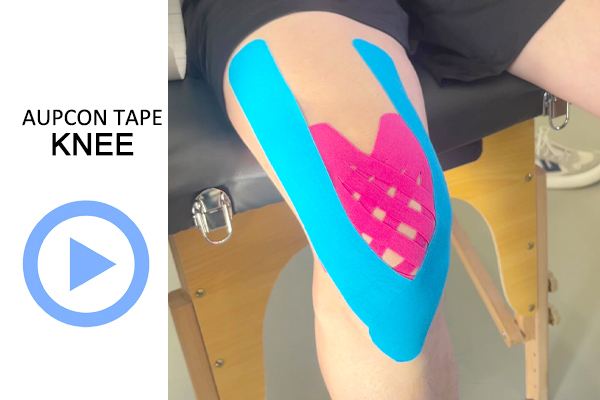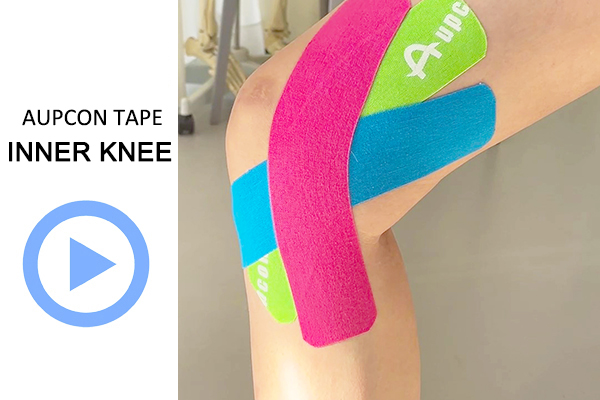How to use kinesiology tape for ACL injury?
ACL injury
The anterior cruciate ligament (ACL) is a key structure that stabilizes the front of the knee joint. People who play high-intensity sports like soccer, rugby, and basketball often have this injury. An ACL injury can make the knee very unstable. If you don’t treat it, it can lead to several related issues, including repeated sprains, patellar pain, a torn meniscus, and damage to other important structures. Ultimately, this can accelerate the joint’s aging process and lead to the development of osteoarthritis.
Este artículo analiza cómo cinta de kinesiología can be used to treat ACL injuries and alleviate symptoms associated with them.
Cinta de kinesiología CONSEJOS DE CINTA
- Clean your skin before applying to extend the life of the kinesiology tape for ACL injury.
- Para garantizar un ajuste seguro, corte las cuatro esquinas con tijeras para cinta kinesiológica para evitar que se caigan.
- No toque la superficie del pegamento al aplicar la cinta para evitar afectar la adherencia.
- After applying, wipe the kinesiology tape for ACL injury several times to make it stick firmly.
- Avoid prolonged use of knee therapy tape and replace it within 3-7 days.
- If there is an open wound on the thigh, do not apply knee therapy tape to the area.
How to use kinesiology tape for ACL injury?
First, secure the first strip of knee therapy tape above the patella and stretch it downwards by 75% to wrap around the right side.
Similarly, secure the second strip of knee therapy tape and stretch it downwards by 75% to wrap around the left side.
Then, stretch the last strip of knee therapy tape by 75% to wrap around the patella to complete the fit.
What is a kinesiology tape for ACL injury?
The function of kinesiology tape for ACL injury
Pain Modulation: Therapeutic tape for knee can effectively reduce the perception of pain signals, thus alleviating pain.
Support: By lifting the skin, it provides external stability.
Reducing Swelling: Lifting the skin promotes fluid drainage, reducing swelling during the acute phase.
Kinesiology tape for ACL injury application
La cinta de kinesiología se usa ampliamente para tratar desgarros de menisco, dolor de rodilla, rodilla de corredor, tendinitis rotulianay esguinces.
Cinta de kinesiología de algodón
for ACL injury
→
Preguntas frecuentes
An ACL injury refers to damage or tearing of the anterior cruciate ligament, commonly occurring during sports activities when the knee joint is subjected to excessive twisting, sudden stopping, or impact. It is one of the most vulnerable ligaments in the knee joint, potentially leading to joint instability, pain, swelling, and even secondary damage to the meniscus or cartilage.
Absolutely. As a therapeutic tape for knee with physical therapy effects, it is made of medical-grade materials and is latex-free, comfortable, breathable, skin-friendly, and waterproof. You can follow the instructions in this article and use it in conjunction with Aupcon therapeutic tape for knee to treat ACL injuries.
Aupcon kinesiology tape for ACL injury can generally be used for 3-5 days. However, for areas with a large range of motion like the knee, we recommend changing them daily to ensure effective adhesion and keep the application area clean and hygienic to prevent bacterial growth.
This is only suitable for individuals with minor tears and those with low activity levels.
Injury Type: Grade I or II Sprain
Grade I (Mild): The ligament is stretched, but the fibers are intact. The knee joint is stable.
Grade II (Moderate): Partial tear of the ligament fibers. Mild to moderate laxity in the knee joint.
In these cases, the structural continuity of the ligament is still intact, and it may heal with scarring through conservative treatment. Using kinesiology tape for ACL injury can help with conservative treatment, and an optimal environment needs to be created through active rehabilitation training to help you:
Strengthen Muscles: Focus on strengthening the quadriceps on the front of the thigh and the hamstrings on the back. Strong muscles are the “dynamic stabilizers” of the knee joint, which can largely compensate for damaged ACL function and prevent knee instability.
Restore Range of Motion: Restore knee flexion and extension as early as possible within a pain-free range to prevent joint stiffness.
Proprioceptive training: Perform balance exercises (such as standing on one leg) to re-establish the brain’s control over knee joint position and movement.
Managing swelling and pain: Use methods such as ice packs, pressure, and therapeutic tape for knee.
Otras partes del cuerpo
You’ve already learned about the taping treatment for ACL injuries. Now, you’re probably also interested in related conditions like meniscus tears, medial collateral ligament injuries, y lateral collateral ligament injuries. Please continue to learn more about aupcon‘s ‘Cómo usar la cinta de kinesiología‘ tutorial series.

